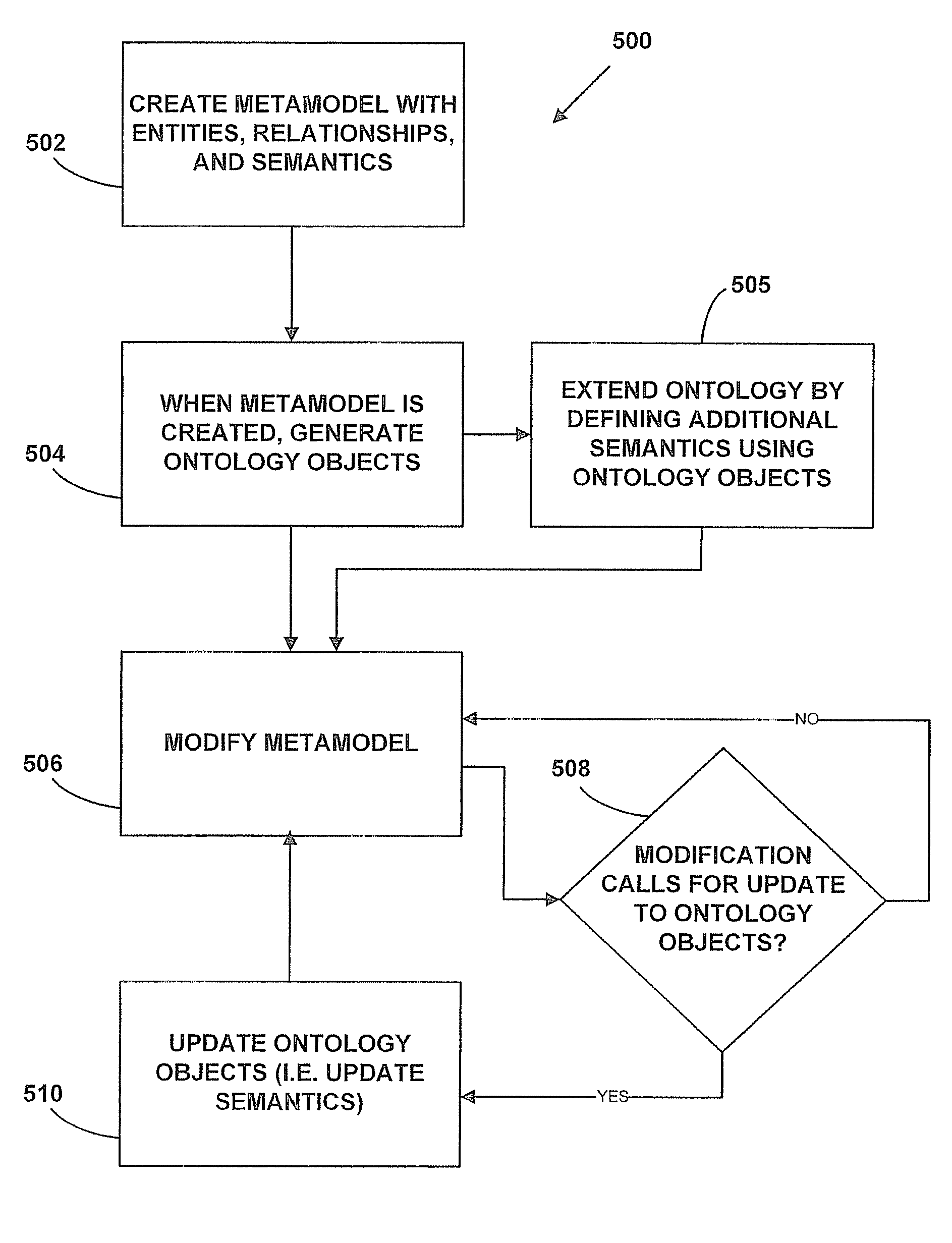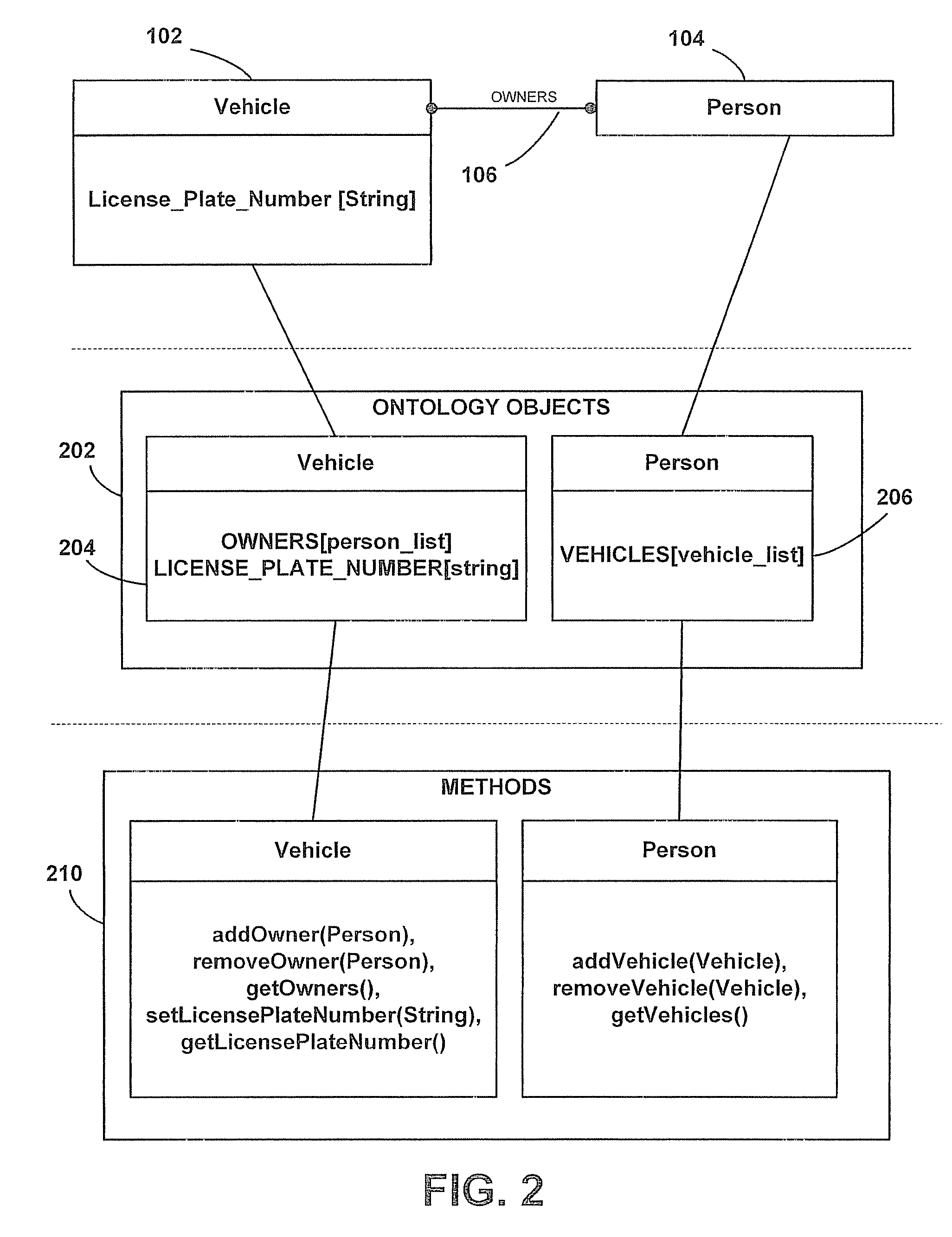Method and System for Metamodeling Using Dynamic Ontology Objects
a dynamic ontology and object technology, applied in the field of metamodeling, can solve problems such as invalid instance models based on the original domain-specific model, data structures that are not standard, and constitute a barrier to user-created modeling tools
- Summary
- Abstract
- Description
- Claims
- Application Information
AI Technical Summary
Benefits of technology
Problems solved by technology
Method used
Image
Examples
Embodiment Construction
[0022]Dynamic ontology objects capture and maintain semantics that are consistent with the specifications of a user-defined metamodel. In practice, this may be accomplished by generating (and compiling, if necessary) program code for ontology objects whenever a user modifies a metamodel. Accordingly, an exemplary metamodeling environment provides tools for creating a metamodel. The tools provided by the metamodeling environment can be used to define an ontology that consists of entities, properties of entities, relationships among those entities, and the behavior of those entities. The metamodeling environment also provides a mechanism that automatically creates ontology objects that reflect the user-defined ontology. In particular, the tool may create dynamic ontology objects consisting of classes that correspond to the entities that make up the user-defined ontology. These classes may include constructors to create and initialize instance model instances of the metamodel entities ...
PUM
 Login to View More
Login to View More Abstract
Description
Claims
Application Information
 Login to View More
Login to View More - R&D
- Intellectual Property
- Life Sciences
- Materials
- Tech Scout
- Unparalleled Data Quality
- Higher Quality Content
- 60% Fewer Hallucinations
Browse by: Latest US Patents, China's latest patents, Technical Efficacy Thesaurus, Application Domain, Technology Topic, Popular Technical Reports.
© 2025 PatSnap. All rights reserved.Legal|Privacy policy|Modern Slavery Act Transparency Statement|Sitemap|About US| Contact US: help@patsnap.com



